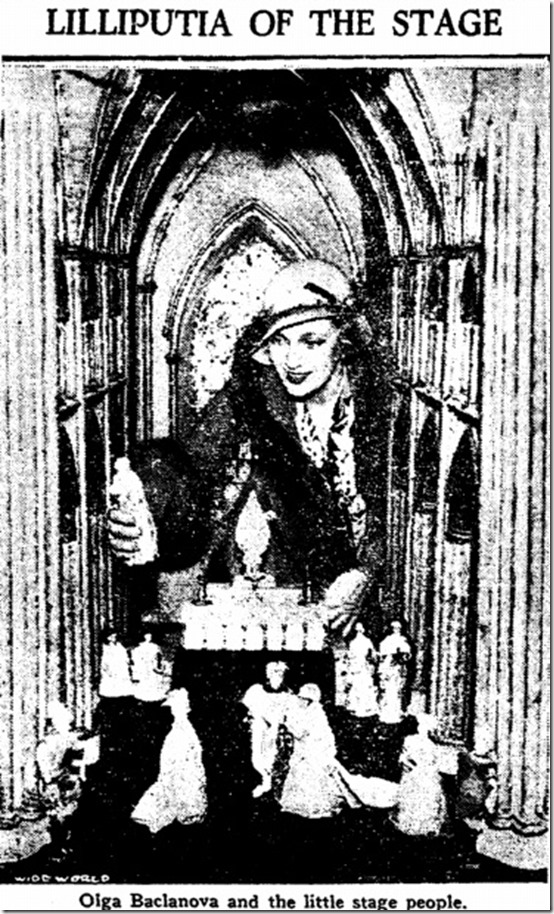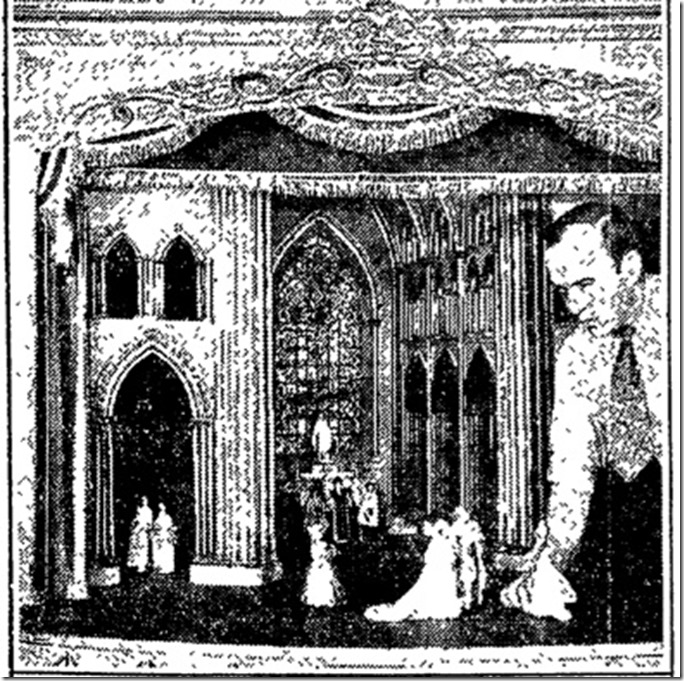
Theatre has enlightened and entertained audiences for centuries as it weaves the tales of life and love through both the comedic and dramatic talents of myriad actors. While most stage acting involves the danger and electricity of live performance, sometimes it employs only the voice to bring characters to life, such as in puppetry.
Puppetry and marionette work come alive solely through the magic of performers’ skills in voice acting. Both have entertained people young and old for eons, either through the slapstick anger of Punch and Judy shows, or the technical skill of real theatrical performance. Los Angeles possessed its own unique form of puppetry work in the early 1930s with Ellsworth Martin’s Theatre Mechanique, a sophisticated blend of old and new technologies for stage enthusiasts in what some newspapers at the time called “the world’s smallest theatre.”
Mary Mallory’s “Hollywoodland: Tales Lost and Found” is available for the Kindle.

While little is known of Martin, he was born in San Francisco on December 8, 1896, living with his family in Sausalito, according to the 1900 U. S. Federal Census. It appears he was drawn to theatre at a young age, telling one interviewer that he loved constructing miniature sets as a child. The April 5, 1931 Los Angeles Times describes Martin’s “childhood pleasure in building sets and planning plays,” akin to Robert Louis Stevenson.
Martin dreamed of producing giant productions on a miniature scale – that is, constructing a workable Lilliputian set in which dolls or puppets would serve as actors. He had long considered how to make this viable through technology and old fashioned know-how. Thanks to advances in electronic and recording technology in the 1920s, his dream could finally come true, after 15 years of research and tinkering while working as a press agent and technician at a film studio.
The Theatre Mechanique consisted of a wooden theatre with either four or six foot wide proscenium arch, which, through the careful use of sets, lighting, and perspective, could take on the aspects of real theatre. Figures approximately six to eight inches tall operated through a system of tracks and wires to move around the stage, and records onto which dialogue and music had been recorded provided the soundtrack and dialogue. Carefully synchronized radio and phonograph connections allowed the marionettes to “speak,” and the marionettes were fastened to ribbons, which allowed Martin to move them easily around the stage.
A Scotsman by the name of Dominic McBride cued classical musical pieces to scenes from the plays to provide musical accompaniment. Like Martin, he also possessed theatre experience and training, and per the paper, gained his musical experience managing the record department of a large music store as well as at MGM Studios, “where he selected ‘atmosphere’ for sound films.” McBride employed classical music cues in the score, opening with organ preludes by the like of Guilmant and Saint-Saens, before moving on to Brahms, Beethoven, Cesar Franck, Claude Debussy, Holst’s “The Planets,” Wagner’s “The Flying Dutchman,” and Hector Berlioz’ “Symphonie Fantastique.”
Beginning in late March, Martin presented “The King’s Romance” Tuesday through Saturday nights at 9 pm to an audience of 50, with matinees at 4 for children. The play featured four main parts, King Arthur, King Leodogran, the Queen, and a knight, with Sheldon Lewis voicing King Leodogran, James Bush King Arthur, and Virginia Pearson the Queen.
Katherine T. von Blon in the March 21, 1931 Los Angeles Times called the Theatre Mechanique an “infinitesimal playhouse” located in a store front at 112 Larchmont Blvd., which offered a luminous aura around the medium of theatre. Her review of Martin’s “musical drama” production of “The King’s Romance,” based on Alfred, Lord Tennyson’s “The Coming of Arthur,” described how the intimate setting magically drew the audience into the mythical story. Her review goes on to state, “The tiny figurines which represented the persons of the story assumed the proportion of evanescent memories, and seemed to suggest that they themselves were not of so great importance of the flaming ideals of which they bore witness.”
Newspapers around the country featured wire stories showing photos of Martin with his theatre, including the Sheboygan Press, Anniston Star, Portsmouth Times, and Charleston Gazette. Arts and Architecture magazine even featured a story on the tiny theatre in 1932.
Audiences seemed to flock to the magical little show. Martin kept extending his run, indefinitely, per the June 27, 1931 Los Angeles Times. On that date at 3, Martin presented a special matinee benefiting the “Parent-Teachers’ Federation for children’s luncheons, with kids only gaining admission by presenting canned or nonperishable foods upon entering.
Celebrities even attended, with actress Pauline Frederick, Ian Keith, and the cast of “Elizabeth the Queen” attending a special midnight show on April 19, 1931.
The May 10 Times went on to describe how Martin employed a revolving set on which five to six sets could be changed for each scene, on which up to 40-50 marionettes could perform. All of the pieces could be easily packed and ready to transport in two hours. This article states that “the story is told by the sets, and the moods created by the music and the lighting; the figures are of a stylized in animation, employed merely to create the picture and illustrate the idea.” The reviewer found the action in the diminutive stage more poignant than that from a life-size theatre. Martin envisioned using the small stage to present opera in the future.
Soon after, Martin took the show on the road, intending to travel up the West Coast. No other stories appear in 1931, but during the week of February 16, 1932, the Ventura Community Players offered performances by the Theatre Mechanique, which featured ten speaking voices and forty musical selections in “The King’s Romance.” Silent actor Harrison Ford led the cast from the Pasadena Playhouse in new recordings of the dialogue.
In March, Martin and his Theatre Mechanique arrived in his old home town of San Francisco to perform at the Travers Theatre in the Fairmont Hotel for four shows beginning March 7 with “The King’s Romance.” Once again Harrison Ford would voice the role of the court jester in the expanded production. A March 7, 1932 story in the San Francisco Chronicle reported that the actor less drama required five months to prepare the show, and weighed more than a ton when carted around in its five crates.
A March 9 story called it “a spectacle in miniature,” with “invisible machinery” operating the puppets, which moved to synchronized sound. The report found the production design marvelous, describing how the first act ends on a glorious sunset “palpitating on rosy hues” behind a tiny “tracery” of foliage and clouds. The show was so popular, the run extended until th end of March
Actress Olga Baclanova, starring in a production of “Grand Hotel” in the city, even visited a production on March 23, taking in the diminutive set and admiring what the paper called “the little stage people.”
Perhaps Martin really hoped to discover an “angel” to help continue his production by traveling to San Francisco. One of the early stories in the Chronicle states that “this small theater may be operated to advantage in a drawing room or in the lounge of a hotel.”
After the last story on March 30, 1932, no further mentions of the Theatre Mechanique can be found in newspapers, suggesting that possibly Martin retired the theatre and moved on to other professions, but remaining in the Bay Area. Martin signed up for World War II service in 1942 though he was over 45. He indicated he worked as secretary for the Lyceum Players in San Francisco.
An unique idea for bringing theatre to life, Ellsworth Martin’s Theatre Mechanique entranced both young and old who attended his production of “The King’s Romance,” offering them a mystical and poetic portrait of earlier times. Perhaps one day his mighty little theatre will resurface to entertain new audiences in the glories of dainty theatre.


Wonderful sets. Wish he’d filmed a show, but that would have been expensive given the recording tech then.
LikeLike